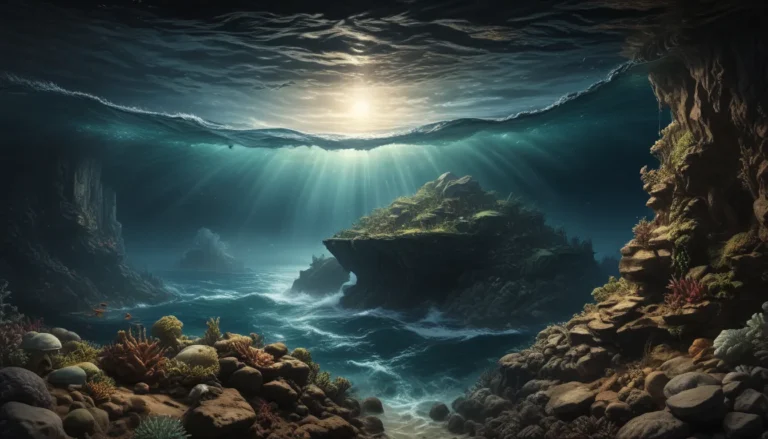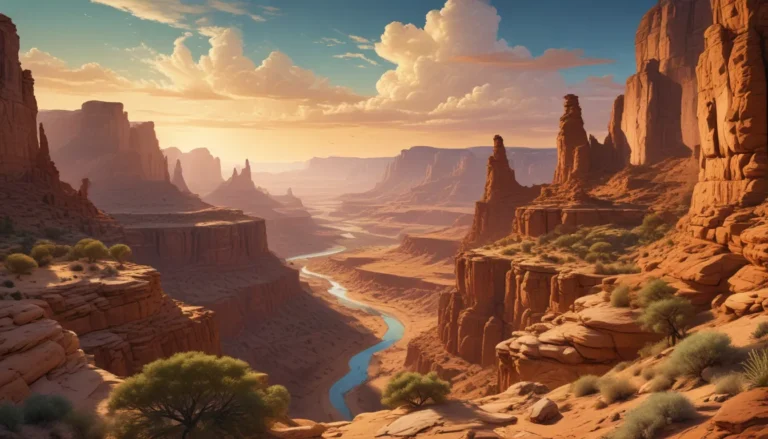A Note About Images: The images used in our articles are for illustration purposes only and may not exactly match the content. They are meant to engage readers, but the text should be relied upon for accurate information.
Are you ready to embark on a journey through the intriguing world of geology? Prepare yourself as we unravel the enigmatic nature of peneplains, vast and ancient landforms shrouded in mystery. Despite their serene appearance, these flat and gently rolling terrains hold a complex history that has piqued the interest of geologists for centuries.
Key Takeaways:
- Peneplains are ancient, flat landforms shaped by erosion and geological forces, offering valuable insights into Earth’s dynamic processes.
- These captivating formations continue to puzzle scientists with their mysterious origins and diverse landscapes.
The Definition of Peneplain
A peneplain is a nearly flat land surface shaped by centuries of erosion and natural processes. With low relief and smooth topography, these formations are commonly found in regions with moderate to heavy rainfall. The term “peneplain” stems from the Latin words “pene,” meaning almost, and “plana,” meaning plane or level.
The Mystery of Formation
The formation of peneplains remains a subject of intrigue among scientists. While various theories exist, the exact processes that give rise to peneplains are not yet fully understood. Some attribute their formation to prolonged erosion, while others suggest tectonic activities, such as uplift and subsidence, play a significant role.
A Remnant of Ancient Landscapes
Peneplains serve as windows to the past, offering glimpses into ancient landscapes shaped by geological forces. These flat terrains often represent remnants of once-mountainous regions that have undergone extensive erosion and weathering. By studying peneplains, geologists can reconstruct the geological history of an area, unveiling insights into Earth’s dynamic processes.
Global Distribution
Peneplains can be found across the globe, showcasing their grandeur and diversity on different continents. Notable examples include the Deccan Plateau in India, the African Shield in Africa, and the Nullarbor Plain in Australia. These expansive landscapes highlight the range of peneplain formations worldwide.
The Astonishing Flatness
A defining feature of peneplains is their astonishing flatness, with smooth and level surfaces extending over vast areas. The extreme flatness of these landforms creates an illusion of endless stretches to the horizon, captivating observers with their seamless appearance.
The Role of Erosion
Erosion stands as the primary force sculpting peneplains over millions of years. Through the actions of water, wind, and ice, irregularities on the land surface are gradually smoothed out, culminating in a level plain. Deep valleys carved by erosion expose layers of rocks, providing insights into the geological history preserved within peneplains.
Hidden Geological Features
Beneath the seemingly flat surface of peneplains lie hidden geological features that enhance their mysterious allure. Some peneplains house remnants of ancient mountains buried beneath sedimentary layers, offering valuable clues about their formation and history.
Peneplains and Biodiversity
Beyond their geological significance, peneplains serve as vital habitats for diverse plant and animal species. The gently sloping terrain of these landforms provides an ideal environment for a variety of vegetation to thrive. Additionally, peneplains often serve as crucial wildlife migration corridors.
The Human Connection
Peneplains not only captivate scientists but also inspire artists, writers, and nature enthusiasts worldwide. The beauty and tranquility of these ancient landscapes have fueled creative expressions throughout history, appearing in paintings, literature, and attracting adventurers seeking a mystical connection with nature.
Conclusion
In conclusion, peneplains stand as fascinating geological formations revealing Earth’s dynamic history. From their formation through erosion to their flat landscapes, peneplains offer valuable insights for geologists and geography enthusiasts alike. These enigmatic formations highlight the enduring forces of weathering and erosion, underscoring the ever-changing nature of our planet’s surface.
FAQs
-
What is a peneplain?
A peneplain is a nearly flat land surface resulting from extensive erosion of once-elevated landscapes. -
How are peneplains formed?
Peneplains form through weathering and erosion, gradually shaping and leveling the land surface over millions of years. -
Where are peneplains found?
Peneplains can be found worldwide, including regions like Scandinavia, Australia, the Appalachian Mountains, and the Deccan Plateau. -
How old are peneplains?
Peneplains are typically millions of years old due to the extensive erosion and leveling processes involved. -
Are peneplains still active today?
While relatively stable, peneplains undergo some erosion and modifications over time due to ongoing weathering processes. -
What is the significance of peneplains?
Peneplains offer insights into an area’s geological history and long-term effects of weathering and erosion, showcasing Earth’s dynamic surface. -
Are peneplains found only on Earth?
While primarily associated with Earth, similar flat landforms created by erosion can also be found on other celestial bodies like Mars. -
Do peneplains have ecological significance?
Peneplains serve as important habitats for various plant and animal species, offering favorable conditions for ecosystems to thrive. -
Can peneplains change over time?
Though stable, peneplains can undergo modifications due to tectonic activity, sea-level fluctuations, and climate changes over extended periods.
Engross yourself in the enigmatic world of peneplains and unravel the mysteries hidden within these ancient landforms. Enjoy the beauty and complexity of Earth’s geological past as you explore the captivating landscapes of peneplains.






